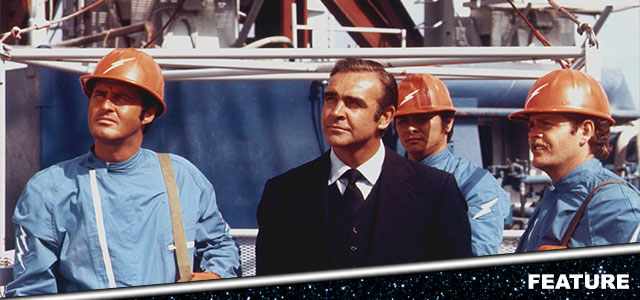
The 25th James Bond movie No Time To Die arrives in Cineworld in September, and we're counting down the days by revisiting all the 007 movies in chronological order of release.
In honour of Daniel Craig's swan-song as 007, we're taking a nostalgic trip back through time. This week: Sean Connery returns in Diamonds are Forever...
What is the story of Diamonds are Forever?
In the wake of his wife Tracey's death, British agent James Bond/007 (Sean Connery) has tracked down and killed the person responsible: Ernst Stavro Blofeld (Charles Gray). Or has he?
While on his latest mission, Bond is drawn into a convoluted plot involving diamond smuggling and solar technology that leads right the way back to his old nemesis. Journeying from Amsterdam to Las Vegas, 007 uncovers a diabolical plot whereby Blofeld has been impersonating wealthy entrepreneur Willard Whyte (Jimmy Dean), in order to gain access to the latter's top-secret space laser technology.
Using diamonds to power the deadly laser beam, Blofeld plans to hold the world to ransom, or else entire cities will be obliterated from the map. With the help of fence turned love interest Tiffany Case (Jill St. John), Bond plans to stop his arch-enemy in his tracks.
How did Diamonds are Forever get made?
At the start of the 1970s, the James Bond franchise was in upheaval. Prior to this, in 1967, actor Sean Connery had vacated the role of the world's greatest secret agent, citing boredom and also the dislike of continued press intrusion. This led to the hiring of Australian model George Lazenby for 1969's On Her Majesty's Secret Service – despite his lack of acting experience, it was expected that he would carry on Connery's mantle.
Lazenby, however, had different ideas. Convinced by his manager that Bond would become a dinosaur in the era of late-sixties hippy chic, Lazenby opted to make just one movie as 007, causing a nightmare for merchandising who were unable to build a campaign based around his image. More than that, it also sent producers Albert R. 'Cubby' Broccoli and Harry Saltzman, the masterminds of the Bond franchise, back to square one.
Who could possibly fill the gap left by Lazenby, and get the Bond series back on track? The answer, it turned out, lay with Connery himself, who was lured back to make one more film following a remarkably lucrative offering. This was a major coup for the producers: Connery was synonymous with the image of the suave, sophisticated yet deadly Bond, the perfect embodiment of author Ian Fleming's creation. But Connery's re-hiring came at a significant price.
Many actors were tested for the role of 007, including future Dumbledore Michael Gambon, who turned the part down citing his bald head, bad teeth and lack of other necessary attributes. Skip to 3:25 into the following Top Gear video where Gambon tells Jeremy Clarkson about his hilarious meeting with Cubby Broccoli.
Other actors who were considered included Batman himself Adam West, and also Burt Reynolds. However, both stated that Bond should be played by a British actor. After circling Psycho's John Gavin, the producers came back to Connery and secured his involvement with an astronomical (for the time) $1.25 million fee.
Distributor United Artists also offered Connery the chance to make two back-to-back films of his choice; he eventually used the money to establish the Scottish International Education Trust, where Scottish artists could apply for funding without having to leave their country to pursue their careers. The first of the two films Connery made was The Offence with director Sidney Lumet, released in 1973; the second was to have been an adaptation of Shakespeare's Macbeth, although this was cancelled when it was announced Roman Polanski was helming his own version.
Work on Diamonds are Forever started during post-production of On Her Majesty's Secret Service; regular Bond screenwriter Richard Maibaum sketched a treatment that brought back the latter film's characters Irma Bunt and Marc-Ange Draco, although this idea was scrapped when Lazenby announced he would be making just one movie.
Another idea involved Goldfinger's twin – the 1964 smash was considered the quintessential Bond cocktail, and the producers were keen to replicate its commercial success. However, this was also scrapped. That said, Goldfinger director Guy Hamilton was hired as the director of Diamonds are Forever, making this the second of his four Bond movies (the other's being 1973's Live and Let Die, and 1974's The Man With the Golden Gun.)
Eventually, American screenwriter Tom Mankiewicz was hired to rewrite Maibaum's treatment and craft an imposter storyline, in which the entrepreneurial Willard Whyte (inspired by legendary aviation mogul Howard Hughes) is kidnapped by Blofeld, whom he later imitates. Being from the USA, Mankiewicz was also entrusted with building the script around mostly American locations and characters, including the gaudy, neon-lit Las Vegas, around which Bond hurtles in a car chase with the police.
(Fun fact: during the climax of the scene where Bond exits the alleyway, there's a close-up shot of him driving in which the Ford Mustang Mach 1 appears to flip from one side to the other. That's because the vehicle enters the alley on a different side to the way it exits, necessitating an insert shot to explain the continuity error.)
By this stage in the Bond franchise, there were also continuity problems involving actors. The diabolical Blofeld had already been portrayed by Donald Pleasence in You Only Live Twice and Telly Savalas in On Her Majesty's Secret Service, owing to the different interpretations of the character in said movies. When it came to Diamonds are Forever, we got another take on Blofeld: a far more camp, and far less threatening, portrayal from British actor Charles Gray.
He had appeared briefly in You Only Live Twice as an ill-fated contact of Bond, and made such an impression in five minutes of screentime that he was summoned to play the role of Bond's greatest enemy. As a sign of how different Gray was from his predecessors, this Blofeld even dresses up in drag to lure Bond girl Tiffany Case into a trap – one of the many indicators that Diamonds was a tongue-in-cheek, somewhat silly follow-up to On Her Majesty's Secret Service.
In fact, many of the characters in Diamonds are Forever haven't aged well – it shows how the movie is very much a product of its time. Tiffany Case is very much in the ditzy mold, a far cry from tenacious predecessor Tracey (Diana Rigg), and then there's the question of Mr. Wint and Mr. Kidd, the first (and to date only) gay hitmen in the Bond franchise. While this may be seen on some level as progressive, the script's treatment of the characters (played by Bruce Glover and Putter Smith) is unfortunately flippant, played for easy laughs. Maybe one of the more amusing appearances comes from Lana Wood, sister of the ill-fated Natalie Wood, playing the voluptuous Plenty O'Toole whom Bond eyes up in his inimitable fashion.
Diamonds uproots Bond from Europe (bar an early sequence in Amsterdam), largely taking place in the anonymous environments of the Nevada desert and California. Even the final set-piece is something of a let-down, a flimsy shootout on Blofeld's oil rig that fails to generate spectacle or excitement in the manner of classic Bond films. (Just think of the majesty of Blofeld's volcano interior in You Only Live Twice as an example.)
Filming in and around Las Vegas was largely secured through the involvement of Howard Hughes, a friend of Broccoli's. Hughes gave permission to film in many of his hotels, and he also helped clear the streets with the help of the local police force to assist filming of the car chase sequence. The owner of the Circus Circus hotel was an avowed Bond fan and gave permission for the filmmakers to shoot inside the venue.
The climactic showdown was initially set to be more spectacular. Frogmen were meant to attach mines to the legs of the oil rig, only for Blofeld to escape in his 'bathosub' vehicle. The chase between Bond and Blofeld was then set to continue across a salt mine where the latter was meant to have died; however, permission to use the location wasn't granted, and the sequence was deemed too long.
There's no denying that Diamonds are Forever struggles with its tone. For every gritty sequence that works, including a terrific elevator fight that hearkens back to From Russia With Love, there's an entirely daft one that snaps viewers out of the movie. A classic example would be the moon buggy chase – Bond steals one from Willard Whyte's facility in Nevada, yet despite the obvious topical concession to the space race (this was the first Bond movie made in the wake of the moon landings), the scene fails to generate any tension, or indeed ironic laughs.
Indeed, that sums up the generally lackluster approach of Diamonds are Forever. A clearly toupeed Connery doesn't appear to be into it, the set-pieces look disappointingly low-budget by the standards of the preceding Bond movies, and it also fails to resolve the storyline from On Her Majesty's Secret Service adequately. Even worse than that, it discards the trauma of Tracey's death with a disappointingly jokey pre-credits sequence, that seems more designed to wash away the bad taste of Lazenby's departure than craft actual continuity.
READ MORE
- No Time To Die and the 6 James Bond movies we never got to see
- 7 actors who could play James Bond after Daniel Craig retires
- Shaken and stirred! Daniel Craig's defining 007 moments
What music is on the Diamonds are Forever soundtrack?
If Diamonds are Forever lets the side down as far as narrative is concerned, it scores another bull's eye with John Barry's score. By this stage, the composer was firmly established as the official voice of Bond, having arranged the unmistakeable Bond theme and written all of the accompanying scores bar 1962's Dr No. He was also by this point the recipient of multiple Oscars, for the gorgeously sweeping Born Free and the fiercely avant-garde, choral-driven The Lion in Winter.
Barry's ability to blend sultry atmosphere with palpable suspense had propelled the likes of On Her Majesty's Secret Service to critical acclaim, and he'd collaborated to winning effect with a number of acclaimed pop artists on the title tracks. Until 1971, the most famous was probably Shirley Bassey, whose piercing vocals on Goldfinger set the standard for 007-related excess and entertainment.
It was perhaps unsurprising that Bassey would return for Diamonds are Forever, the second of her three Bond movies. (The third and final one was 1979's Moonraker.) On Her Majesty's Secret Service had featured a blistering, stand-alone theme for brass and moog synthesiser, but given that Connery's return to Bond was a big deal, it was important the music forge a nostalgic link to past hits.
Somewhat underrated in the Bond canon, the song for Diamonds are Forever strings a more overtly romantic and sensual note compared to the brasher, more ostentatious Goldfinger. This is accentuated by Barry's typically supple use of strings, harp and xylophone to create an appropriately crystalline atmosphere akin to the material i the film's title. When accompanied by Don Black's teasing lyrics and Maurice Binder's typically provocative credits designs, the title track radiates everything we know about 007.
Barry's underscore melody is no less impressive – in typical fashion, he remains loyal to the main melody of the song, ensuring emotional continuity between the credits sequence and everything that follows. However, large sections of the Diamonds are Forever score play out as extended lounge jazz arrangements, a reflection of the film's early-seventies context and also the decadent Las Vegas setting. Barry, of course, had past form in this area: he achieved notoriety in the 1950s with his own jazz ensemble, the John Barry Seven.
The composer works overtime to inject tension and atmosphere into the lacklustre storyline. The typically excellent dialogue between triangle, brass and bass woodwind speaks directly of the shadowy environments in which Bond operates – these were the musical stylistics he laid down in his first Bond score, From Russia With Love.
Every now and then, the stylish, carefully controlled atmosphere erupts in action scenes of real excitement. Barry introduces a little action motif in the opening 'Gunbarrel and Manhunt' that aggressively oscillates between brass, snare drums and strings – it reflects the occasional primal savagery of Connery's Bond, who can famously go from debonair to killer in the blink of an eye. This particular piece occurs multiple times throughout the score, accompanying 007's scraps with various enemies, including 'Peter Franks' (played in the movie by stuntman Joe Robinson).
This would, however, be Barry's final Bond score for a few years. With the arrival of Roger Moore in Live and Let Die, the composer would give away to Beatles producer George Martin. This would be the first time the musical continuity of the franchise had been disrupted since it began – another sign of how the fabric of the Bond universe was breaking up and re-forming in front of everyone's eyes.
How was Diamonds are Forever received?
Although Connery's return to Bond caused much excitement, the film itself received a muted reception. It was, however, a commercial improve on On Her Majesty's Secret Service, grossing $116 worldwide against a $7 million budget. (Majesty's had failed to crack the pivotal $100 million mark.) No doubt this was propelled by the sheer novelty value of seeing Connery back in his signature role.
Film critic Danny Peary was dismissive of the movie. "One of the most forgettable movies of the entire Bond series", he wrote, adding that "until Blofeld's reappearance we must watch what is no better than a mundane diamond-smuggling melodrama, without the spectacle we associate with James Bond: the Las Vegas setting isn't exotic enough, there's little humour, assassins Mr. Kidd and Mr. Wint are similar to characters you'd find on The Avengers, but not nearly as amusing – and the trouble Bond gets into, even Maxwell Smart could escape".
In 2012, Diamonds are Forever was ranked the third-worst Bond movie of all time by IGN. Nevertheless, the film does have some supporters. The esteemed film critic Roger Ebert was a fan: "It has been claimed that the plot is too complicated to describe, but I think I could if I wanted to. I can't imagine why anyone would want to, though. The point in a Bond adventure is the moment, the surface, what's happening now. The less time wasted on plot, the better".
Nevertheless, at the time of the film's release, it was hard to deny that Bond was in serious need of a refresh. And two years later, that's exactly what the series got...
What was the next movie in the James Bond series?
Released in 1973, Live and Let Die marked the debut of Roger Moore as 007.
When is No Time To Die released in the UK?
No Time To Die is released on 30th September. Don't forget to tweet us your favourite James Bond movies @Cineworld.


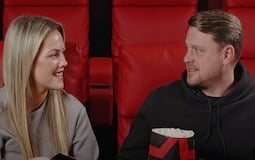
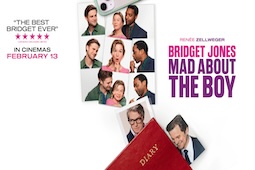
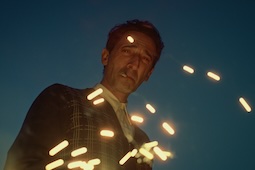
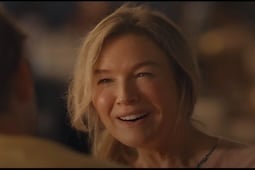
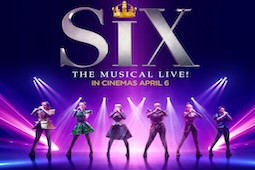
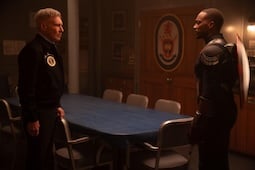

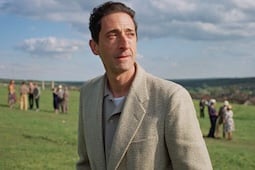
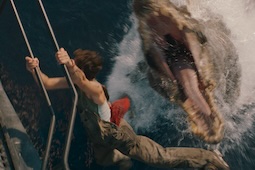




.jpg)
.png)






